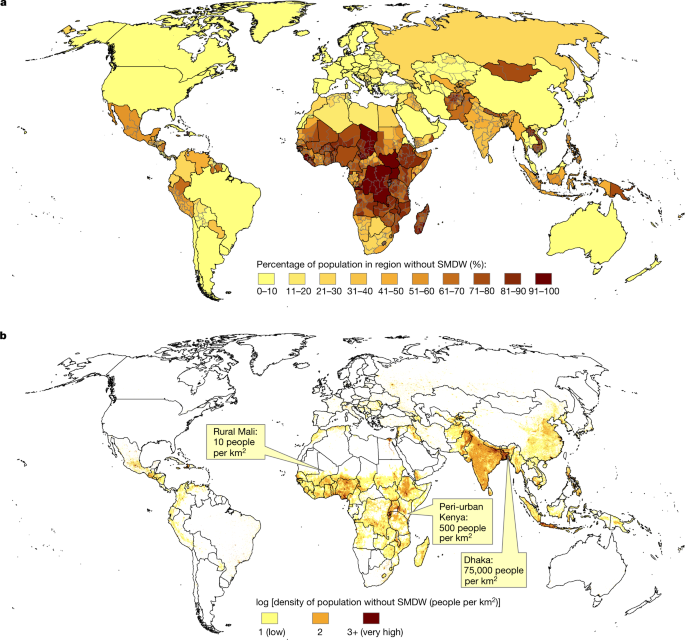Depending on your favourite scifi, google has invented a Star Wars moisture farm or a Dune windtrap:

Geographic distribution of world population without SMDW

Upper bounds water output of solar-driven AWH in relation to global user base
Writeup Paper
Global potential for harvesting drinking water from air using solar energy
Solar-driven atmospheric water harvesting (AWH) devices with continuous cycling may accelerate progress by enabling decentralized extraction of water from air.
Here we show that AWH could provide safely managed drinking water (SMDW) for a billion people. Our assessment—using Google Earth Engine—introduces a hypothetical 1-metre-square device with a SY profile of 0.2 to 2.5 litres per kilowatt-hour (0.1 to 1.25 litres per kilowatt-hour for a 2-metre-square device) at 30% to 90% RH, respectively. Such a device could meet a target average daily drinking water requirement of 5 litres per day per person.
Solar-driven atmospheric water harvesting (AWH) devices with continuous cycling may accelerate progress by enabling decentralized extraction of water from air.
Here we show that AWH could provide safely managed drinking water (SMDW) for a billion people. Our assessment—using Google Earth Engine—introduces a hypothetical 1-metre-square device with a SY profile of 0.2 to 2.5 litres per kilowatt-hour (0.1 to 1.25 litres per kilowatt-hour for a 2-metre-square device) at 30% to 90% RH, respectively. Such a device could meet a target average daily drinking water requirement of 5 litres per day per person.

Geographic distribution of world population without SMDW

Upper bounds water output of solar-driven AWH in relation to global user base
Writeup Paper


